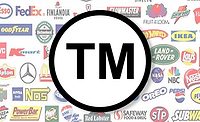2024 State of the Industry Report
Roofing Trends in 2024

With the start of 2024 here, exploring the issues and trends that the roofing industry recently experienced is beneficial. It’s equally important to look ahead and prepare for what this year may bring.
So Long, Supply Chain Issues!
The shortages and delays experienced since the onset of the COVID-19 pandemic have eased in 2023. However, we continue to see prices increasing due to inflation and the increase in core component pricing of many of the key roofing products.
In the months ahead, it will remain critical for contractors to have solid relationships with their suppliers to ensure they receive materials on time and budget.
Sustainability Preferences
In recent months, sustainability has become increasingly pertinent to the roofing industry. We are seeing increased emphasis on clean energy, as well as stricter regulations related to carbon pollution. More and more architects and building owners are stating preferences for environmentally friendly materials and requesting greater transparency about how materials are acquired.
Determining whether a material is sustainable depends on many factors, including its source. A sustainable material is produced ecologically balanced — without damaging or depleting resources required for its production. In addition to considering how a material is sourced, we must also determine if how it was created or harvested resulted in significant environmental damage. With this in mind, any roofing products sourced from mined materials or fossil fuels cannot be considered sustainable since those resources cannot be replaced.
American-Made Products
In addition to sustainable sourcing, we must adhere to the “Build America, Buy America Act” requirements, a key component of the bipartisan Infrastructure Law passed in 2021. The law requires that federally funded infrastructure projects use domestically produced steel, iron, manufactured products, and construction materials. According to guidance from the White House, manufactured products for federal projects must be produced in the United States, and the costs of U.S.-made components of those products must exceed 55% of all component costs. However, not all components must be made in this country.
The goal of this legislation is for the taxpayer dollars that make infrastructure projects possible to also support American jobs and manufacturing. Such a requirement, while well-meaning, may prove challenging in the months ahead.
Technology Innovations
Advances in technology have also played an enormous role in the industry, and that progress will no doubt continue in the coming year.
On the job site, contractors may rely more and more on drones. They can aid in the creation of inspection reports, assist with measurements, and even install shingles with a specialized nail gun. Contractors may also benefit from robotic devices for shingle installation and roofing inspections. While robots and drones may never replace the expertise of a human roofer, they can provide access to dangerous heights and other locations, which aids in safety and efficiency.
Contractors can also look to advanced technology for roofing materials. One example is the solar shingle, which provides the solar panel’s energy while protecting a building in the way a traditional shingle does. Owners may also be intrigued by the promise of ‘smart’ roofs, which use Wi-Fi-enabled roof sensors to detect dangers, such as blocked drains, hazardous snow loads, and leaks.
In addition, self-healing and self-cleaning roofs could become more common. A thermoplastic concept, self-healing shingles can ostensibly repair themselves after light damage like scuffs and scratches. Meanwhile, self-cleaning roofs have water-repellant coatings that prevent mildew, discourage muck from sticking, and enable any dirt that does stick to wash away quickly.
Contractors can use advanced technology in their offices to create more effective and accurate estimates. Although this software will rely on a knowledgeable roofing professional to enter the correct information, it offers a streamlined process that can save companies time and money.
Final Thoughts
Like seemingly everything else these days, the roofing industry is constantly evolving. Owner preferences change, new legislation is passed, and new technologies are introduced. It can be challenging to keep up!
The information contained in this article is for general educational information only. This information does not constitute legal advice, is not intended to constitute legal advice, nor should it be relied upon as legal advice for your specific factual pattern or situation.
Looking for a reprint of this article?
From high-res PDFs to custom plaques, order your copy today!







